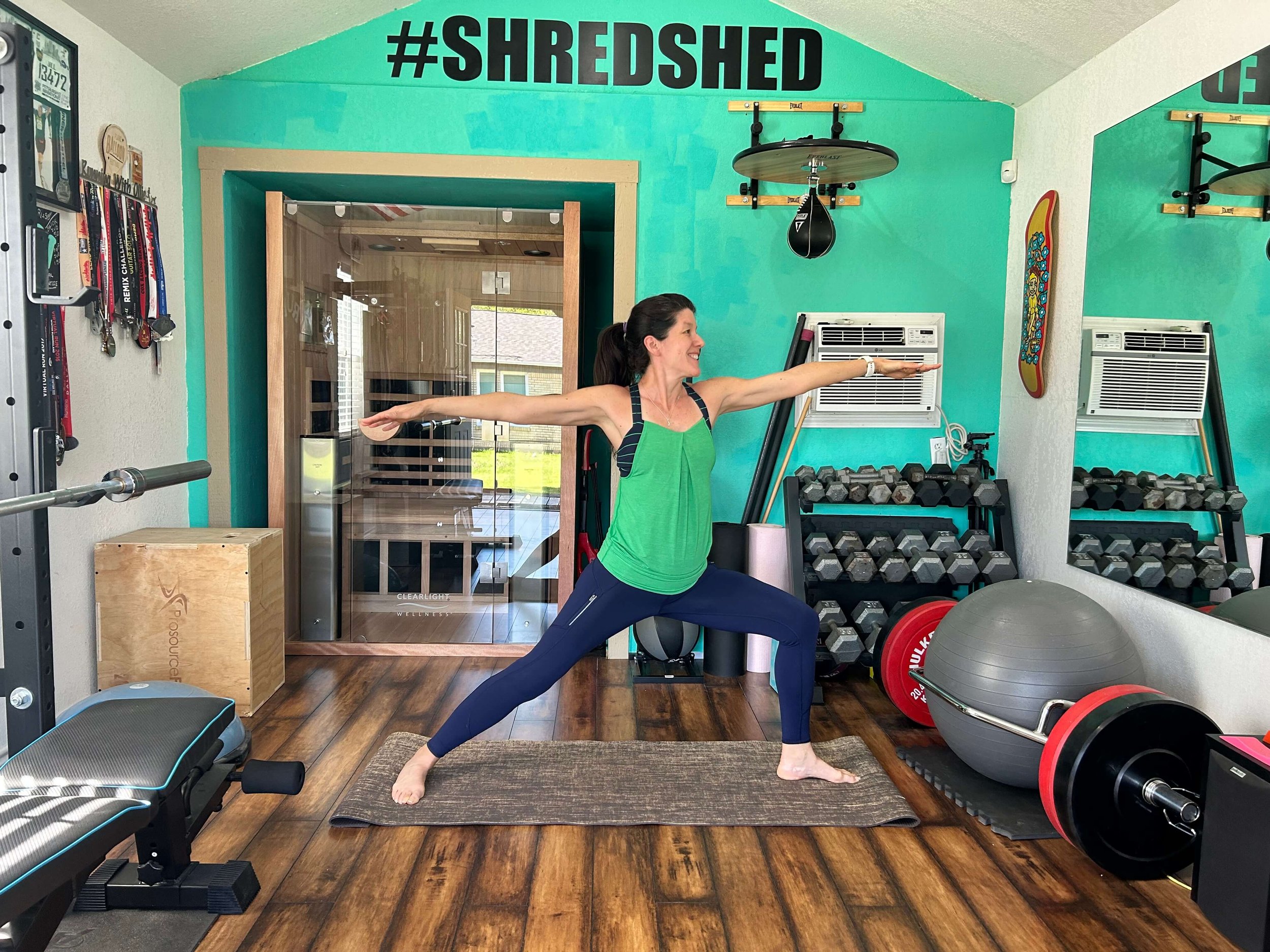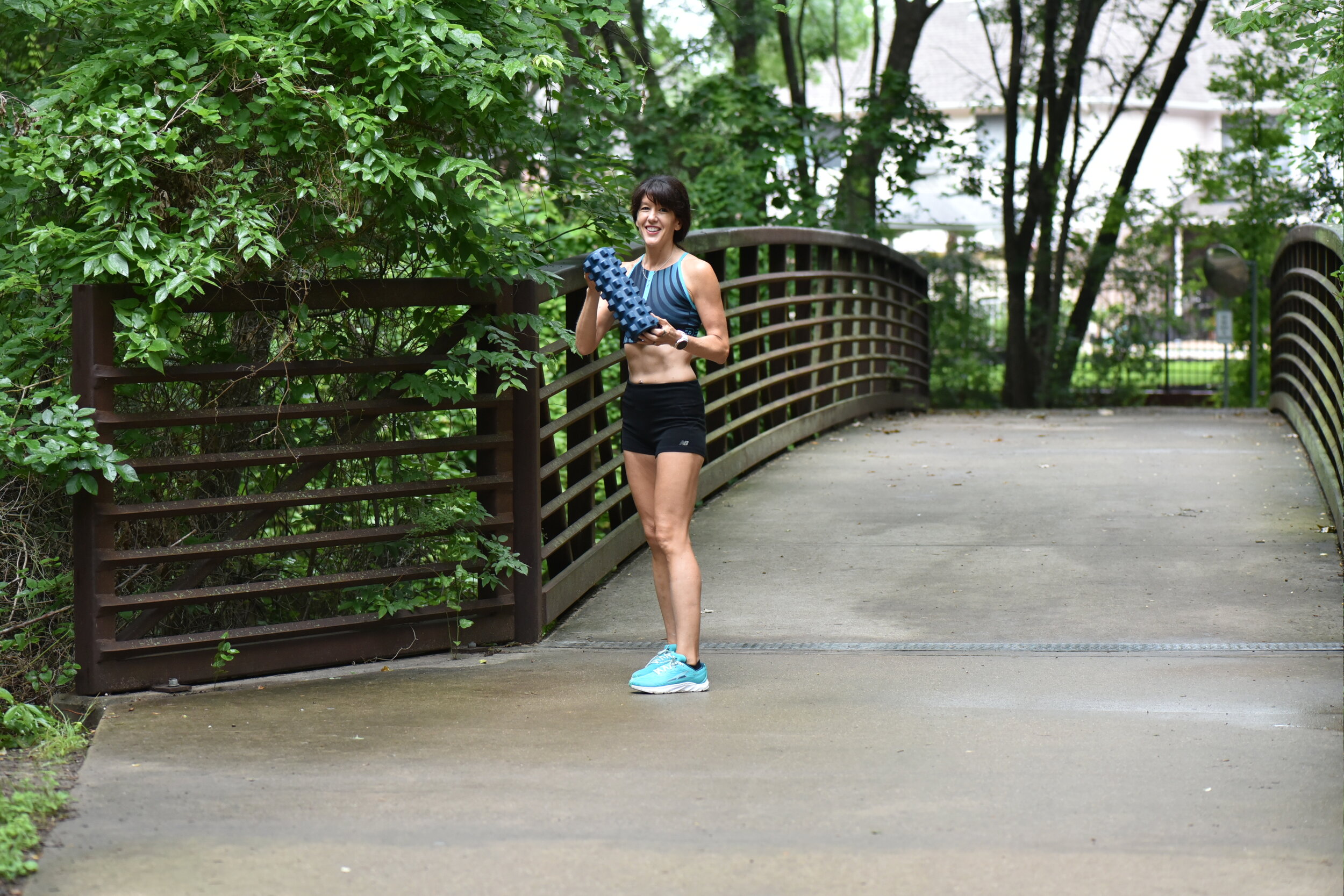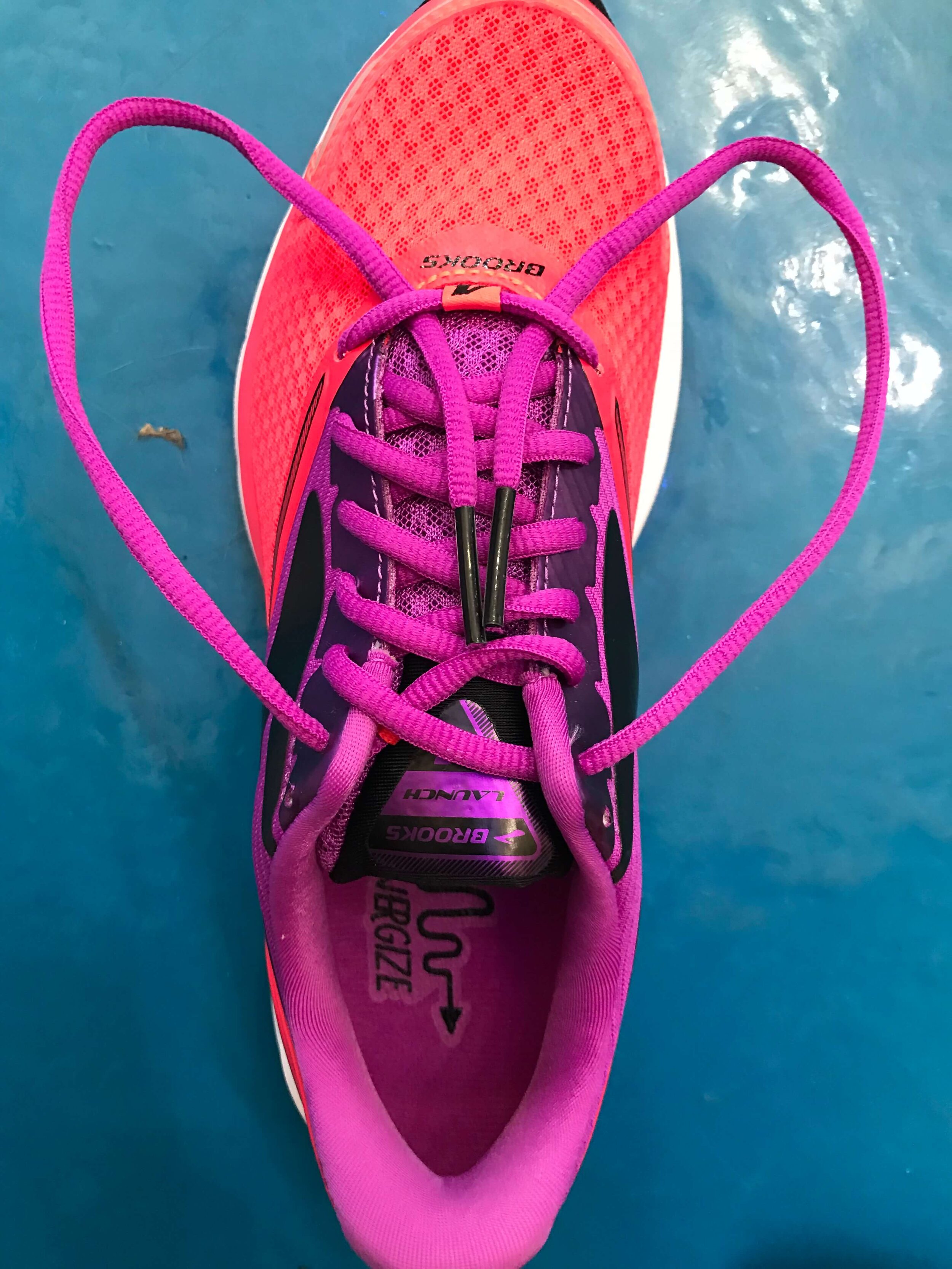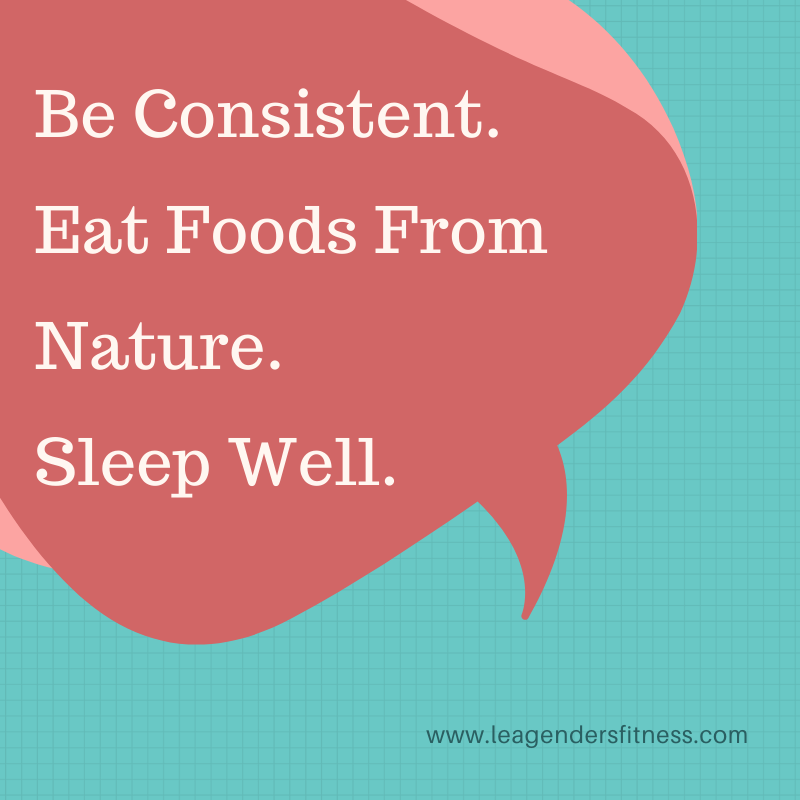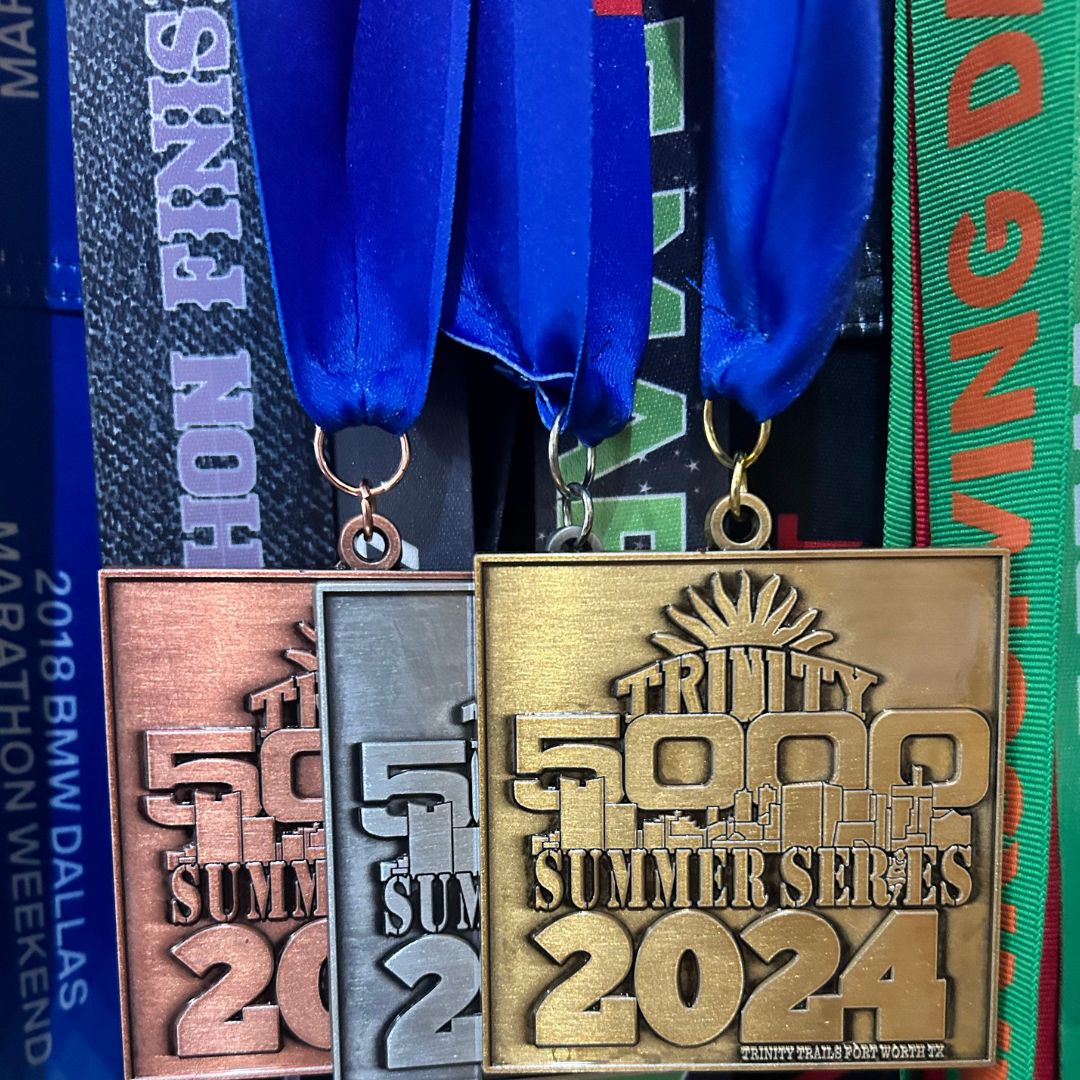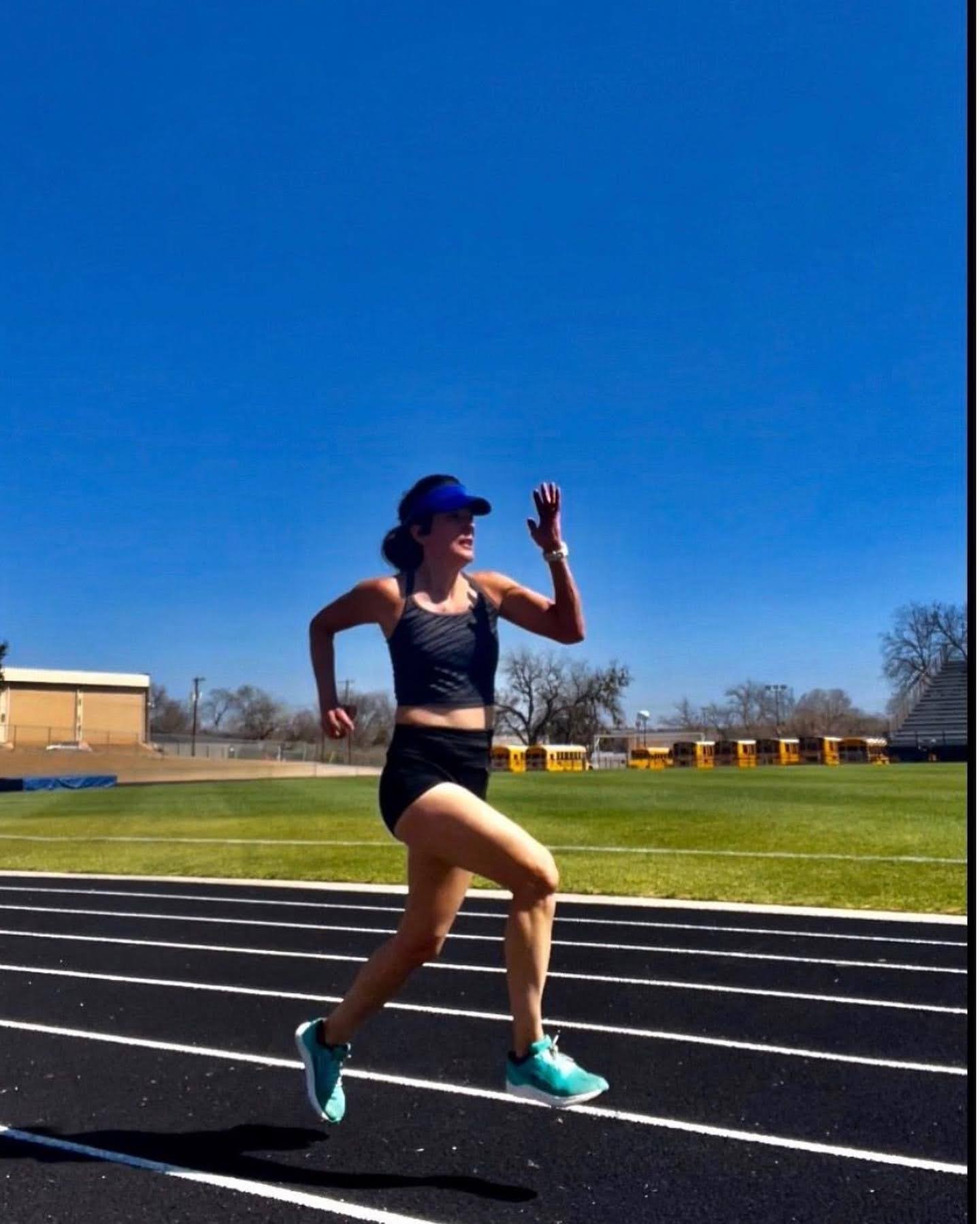Just in case you have tax refund money laying around and have no idea how to spend it, I am here to help with 10 fun fitness finds.
Beginner Kettlebell Circuit Workout for Runners
Welcome to the latest edition of Workout Wednesday! This week we are talking kettlebells! One of the reasons that I love kettlebells is that they are great for incorporating a cardio and strength workout in one. The kettlebell swing is a great exercise to get your heart pumping, and for that reason the swing is the cornerstone move in this kettlebell circuit workout for runners.
I call it a beginner kettlebell workout because it is great for someone who is new to kettlebells to get a feel for the tool without too many complicated moves. There is nothing overly technical here (see notes below to ensure you are performing the swing correctly) and most of these exercises can be done with just a dumbbell too.
This post contains affiliate links which means if you click on a link in this post and make a purchase, I make a small percentage of the sales with no additional cost to you. No one is getting rich here, it just helps with the running (pun intended) of this blog.
I am using a 20lb kettlebell. Choose a weight according to your own fitness level.
I like the GymBoss timer to time my intervals, but you could also just use your phone as a timer.
THE KETTLEBELL CIRCUIT FOR RUNNERS
Start this circuit with 30 seconds of kettlebell swings, then do 30 seconds of each move with kettlebell swings between each strength move.
Kettlebell swings 30 seconds
Squat & Press 30 seconds
Kettlebell swings 30 seconds
Lateral lunge right 30 seconds
Lateral lunge left 30 seconds
Kettlebell swings 30 seconds
Single leg deadlift right 30 seconds
Single leg deadlift left 30 seconds
Kettlebell swings 30 seconds
Plank row right 30 seconds
Plank row left 30 seconds
Rest 30 seconds
Perform circuit 3 times.
Coaches Tips:
THE KETTLEBELL SWING
Start with your legs hip width apart with your knees slightly bent and the kettlebell between your legs, above your knees. Push your hips back behind your center of gravity. With your arms locked straight use your hips to thrust the kettlebell forward. Keep your core tight, your back straight and chest up. Do not lean back or extend your back at the top of the swing. The most important thing to remember is that this is hip hinge move, not a squat, there should never be more than a slight bend at the knees.
SQUAT AND PRESS
With your feet a little wider than hip width apart, toes pointing forward, push your hips back and lower until your thighs are parallel to the ground (or as low as your flexibility allows) while shifting your weight onto your heels. Touch your elbows to your knees and press the kettlebell ball over your head into a shoulder press.
LATERAL LUNGE (EACH SIDE)
Runners only move in one plane of motion, forward (& back). It is important for runners to build hip strength and stability by incorporating lateral moves into their workouts to run stronger and help avoid injuries.
With both toes pointing forward, push your hips back and take a large step to your right and bend your right knee into a side lunge position and straighten your left leg. Lower your hips as low as your flexibility will allow. Push back to starting position. Repeat on other side.
SINGLE LEG DEADLIFT (EACH SIDE)
When you run you are balancing on one leg at time repeatedly for the duration of your run. If you perform exercises unilaterally (one side at a time) it will help reduce muscle imbalances, improve core strength & stability and increase runner-specific strength. The single leg deadlift is an ideal exercise for runners.
Standing on one leg, keep your knee slightly bent and perform a deadlift by bending at your hip while keeping your back straight and neck neutral. Extend your free leg behind you in line with your body. Lower until your back is parallel to the floor. With your back straight return to the upright position. Repeat on other side.
PLANK ROWS
Start in a high straight arm plank position with your wrists directly under your shoulders and your legs wider than hip width for stability. Keep your body in a straight line from your shoulders to ankles while engaging your core. Do not allow your hips to hike up or sag down.
With your core tight and your glutes engaged lift your right elbow to row as you bend your elbow up toward the ceiling. Keep your elbows close to your sides as you raise the kettlebell. Repeat on other side.
Give it a try and let me know what you think!
Like this post? It helps me when you share or save to your favorite Pinterest workout board.
52 Healthy Habits: Take a Coffee Break
Welcome to the latest edition of 52 Healthy Habits when I tackle a new healthy habit each week because habits are the building blocks of a healthy lifestyle. No matter where you are in your fitness journey, there is always room for small incremental improvements. This column is part inspiration for you, to give you ideas of some things you can try, and part accountability for me as I try new things in my own journey.
I have no expectations that I will be perfect or successful in all of these habits. I am sure I will find successes, failures and everything inbetween. It's about what we learn along the way about our priorities, our preferences and ourselves.
TAKE A BREAK FROM COFFEE
I'm sorry for the headline. I said 52 Healthy Habits: Take a Coffee Break, but what I meant to say is Take a Break from Coffee...but I didn't want to scare you away.
Take a break from coffee...Say, what?
People hate this idea. When you tell people you want to quit sugar or fried foods or alcohol, they are mostly supportive and agree that they should probably do the same. But when you tell you people you want to take a break from coffee, they usually say, Why the hell would you want to do that?
Before you start throwing things at me, hear me out. I love my coffee. I love it so much my husband and I share an entire pot every morning and on some days I buy another large coffee once I get to work. While there is nothing inherently wrong with coffee (I drink it black) or caffeine in itself, there can be negatives.
One negative is that I noticed when I am heavy into caffeine, it can make it harder to get going in the morning before I have my coffee. When I am off caffeine, I don't have that terrible groggy feeling. It makes it easier to get out of bed in the morning. That groggy feeling is at least partly caffeine withdrawal. If you don't have the dependency on caffeine, you don't have the withdrawal symptoms, so you feel better when you wake up in the morning.
Another is the issue of tolerance. Caffeine is a drug and just like any drug or alcohol, you build up a tolerance over time. So when you used to get a energy boost from one cup of coffee, now it takes three or four cups just to feel normal. I like to drink a whole pot now. Not good.
I am not suggesting that anyone should give up caffeine forever, I wouldn't do that because I want you to still like me after reading this.
A COFFEE RESET TO IMPROVE RUNNING PERFORMANCE?
The key to enjoying the benefits of caffeine while minimizing the negatives is a periodic coffee reset. Every few months take an entire week off of coffee. Admittedly, I feel like $hit the first couple of days, but when the fog clears I am better for it.
I joke that caffeine is my performance enhancing drug. I like getting off caffeine the week before a race, then having a cup before I hit the start line. You really feel the energy and reap the benefits of a caffeine boost on race day.
It's just a reset. After a week off of caffeine, you'll go back to your coffee and feeling the benefits again after just one cup.
SUCCESS STRATEGY
Replace your regular coffee with decaf or hot tea just for one week. Decaf still has a small amount of caffeine to help you get over the hump. If you're like me, having a cup (or pot) of coffee in the morning is a habit. I'll just temporarily replace my coffee with another hot drink so it doesn't feel like such a stretch from my normal behavior. But I know what you're thinking...
There's a time and place for decaf coffee: never and in the trash. Hah.
By the time you read this, I will be on my first day of no caffeine. Wish my husband and co-workers luck these first couple of days.
What do you think? Don't knock it until you try it. Am I crazy? Wait. Don't answer that until after your caffeine withdrawal symptoms have subsided. We're still friends, right?
Playing catch up? Follow along with the 52 Healthy Habits series:
52 HEALTHY HABITS SERIES
week 1: Early to Rise
week 2: Track calories
week 3: Macro cycling
week 4: Morning pages (journaling)
week 5: Stop the scrolling (reading instead of social media)
week 6: Be a good student (take time for learning)
week 7: Strength Training 15 minutes per day
week 8: Eat more protein
Like this post? Please consider sharing.
5K HOORAY: 3.1 REASONS TO LOVE THE 5K
Happy Fri-YAY! This week we are talking 5Ks because I ran the Dallas Rock 'n' Roll marathon series 5K race last Saturday. While I still claim the half marathon as my favorite race distance, this race reminded me why I love 5Ks and racing in the first place.
Why 3.1 reasons? Because a 5K race is 3.1 miles. Seems appropriate.
1. 5Ks ARE FUN FOR EVERYONE
There's no question, most of the people who are out running a 5K are having fun. There are families, friends, kids, tutus and superheroes. A 5K offers a low barrier to entry, most people can at least walk a 5K no matter their current fitness level. It's a fun reason to get outside, get fresh air and some exercise. Even if you are a competitive type, a 5K can be the perfect reason to leave that GPS watch at home and remember why you fell in love with racing in the first place.
2. 5Ks ARE A CHALLENGE FOR EVERYONE
Yes, 5Ks are fun, but don't get me wrong, that doesn't mean they can't be challenging. The great thing about 5Ks is that everyone can challenge themselves at their own level. For some, simply crossing the finish line is physically demanding enough. For others it may be a time goal. Whether you run a 35 minute 5K or a 19 minute 5K can you always challenge yourself to beat your PR by racing the clock. I once heard a misinformed person scoff that 5Ks were "too easy" and I knew right away that this person never really raced. Sure 3.1 miles may feel easy if you jog 3.1 miles, but if you are racing for time, you can push yourself to your limits (if you want to).
3. 5Ks ARE EVERYWHERE
There is no shortage of 5K races. Most medium to large cities have organized 5Ks of different sizes almost every weekend. Whether it's a charity race, a city-organized event or a major race company rolling through town, the options for 5K races are everywhere! Want to run a 5K? Try a quick internet search or your local running store for a calendar of local events.
3.1. NOW YOU CAN FINALLY BUY THAT 3.1 STICKER FOR YOUR CAR WINDOW
Join the club. Buy a 5K bumper sticker to start your running sticker collection and people will repeatedly ask you what it means. Any excuse to talk about running, right? You can hang a medal on a rack in your home, but everyone sees a sticker on your car.
If you want more info on training to run a 5K, I suggest that you start here: How to transition from running and walking intervals to just running. It's a good place to start if you can currently run with with walking intervals.
Like this post? It helps me when you share.
TREADMILL TABATA WORKOUT
Welcome to the latest edition of Workout Wednesday! You may have noticed I am a little obsessed with the Tabata protocol. Tabata is 20 seconds of work, followed by 10 seconds of rest for 8 rounds totaling four minutes. I use them a lot on my Workout Wednesday posts, I use them at my bootcamps (great for group fitness!) and even in my own workouts.
I must point out that a true Tabata is a near 100% effort for 20 seconds/followed by complete rest for 10 seconds. This is not exactly what we are doing here, so it is more of a play on the Tabata protocol, than an exact Tabata workout.
If four minutes doesn't seem like enough of a workout for you, try doing burpees (or other intense exercise) during the 20 second work periods and see how you feel after four minutes. Hah. Otherwise, I stack them with a one minute rest period between each four minute Tabata.
This is a treadmill workout using my version of Tabata protocol. You can download a free Tabata timer app for your phone to easily track the intervals or use a (---> affiliate link) GymBoss timer like I do.
I don't like to assign speeds (mph) or paces to workouts published on this blog because everyone is so different. A 6.0 mph speed (10 minute mile pace) on the treadmill may feel like a leisurely jog to one person and be an all-out sprint to another. Always work at your own level. Please don't try to hit some arbitrary pace because a workout on Pinterest told you to.
This is why I prefer the RPE chart. The RPE chart levels the playing field. Rate of Perceived Exertion allows you to work at the level that is appropriate for your fitness levels based on how you feel and your breathing rate.
TREADMILL TABATA WORKOUT
MINUTES 1-4
Start by warming up for four steady minutes (no Tabata) at a 2-3 on the RPE chart. This is to get your blood circulating and prepare your body for a more intense workout.
MINUTES 4-8
We will start to increase the intensity in this four minute Tabata. Choose a speed that will put you at a RPE 4-6. This may be a jog. You should be able to carry on a conversation at this pace. Cycle through the 20 seconds work/10 seconds rest protocol for four minutes.
*During the rest intervals you can choose to lower the speed on the treadmill to a walking pace but with only 10 seconds to rest it doesn't give you much time for the belt to slow down before you need to speed back up into the work phase. Some people may choose to simply jump to the sides of the treadmill during the 10 second rest phase and let the belt roll. This could be dangerous, we don't want to fall off the back of the treadmill when we hop back on. Try at your own risk. I personally always choose to go with staying on the slowing belt during the rest. Safety first.
MINUTES 8-9
Active rest at RPE 2-3 for one minute before starting your next cycle. This is usually a walk or very slow jog.
MINUTES 9-13
This cycle we are going to up the intensity a little more to a RPE 7-8 from the above chart. You should be working hard during the 20 second work intervals.
MINUTES 13-14
Active rest at RPE 2-3 for one minute before starting your next cycle.
MINUTES 14-18
This is your last high intensity cycle. Work at a RPE 7-8 again during the 20 second work intervals and RPE 2-3 during the 10 second rests. This is your last Tabata. Make it count.
MINUTES 18-20
Cool down for at least two minutes by walking.
Give it a try! Like this post? Please consider sharing or saving to your favorite Pinterest workout board.




